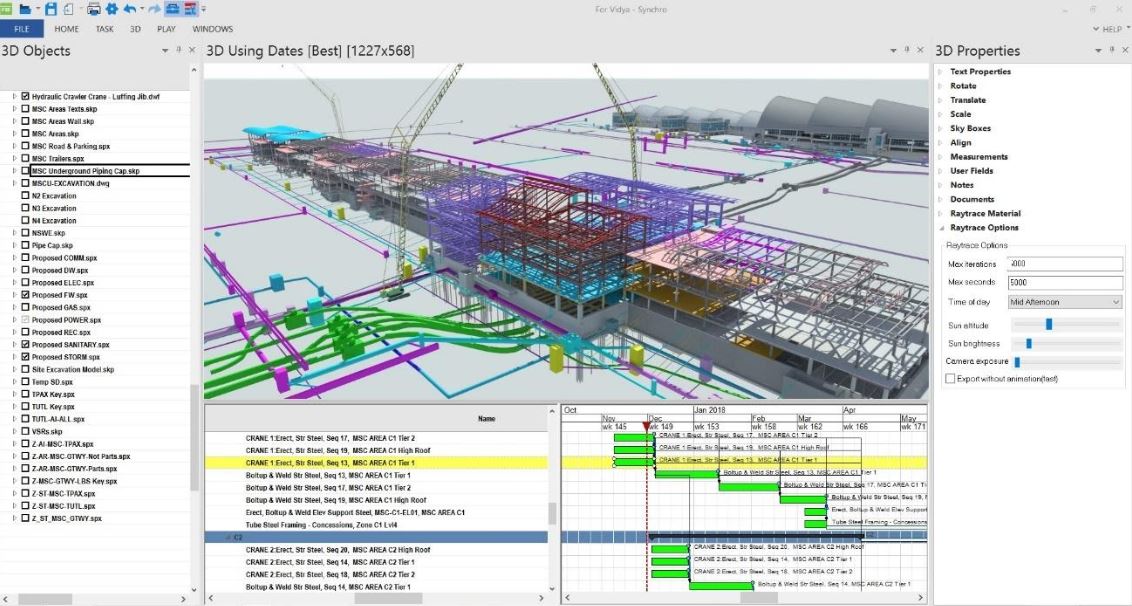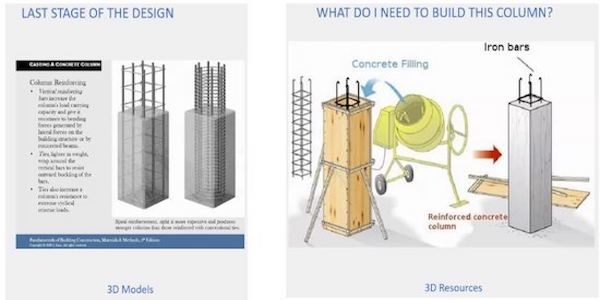Technical Area | Articles
The place to solve all your BIM doubts
Definition, relation and evolution between BIM an VDC
The three-dimensional model of Virtual Design and Construction is added as a new dimension of the BIM
BIM Implementation Operation Protocols
The origin of Virtual Design and Construction (VDC)
The concept VDC was first developed by the CIFE - Center for Integrated Facility Engineering at Stanford University of California in 2001 when the BIM concept had barely entered the design software market. CIFE’s mission is to be the world's premier academic research center for Virtual Design and Construction of Architecture - Engineering - Construction industry projects, in other words, its mission is to investigate how project results can be improved with the use of BIM technology, so that this improvement in results is for everyone, for the client-owner, for designers, for contractors and for all project stakeholders. And here I am already introducing part of its definition.
Today, CIFE’s methodology has been establishing itself as the most efficient way to obtain better projects, with less time and cost than expected and with higher quality.
¿What is VDS compared to BIM?
If we start from the definition of VDC in Wikipedia, we may get a little confused reading it:
Virtual design and construction (VDC) is the management of integrated multi-disciplinary performance models of design-construction projects, including the product (i.e., facilities), work processes and organization of the design - construction - operation team in order to support explicit and public business objectives.
Don’t you? I will try to explain it in a more understandable way.
By the acronym of VDC we already intuit that it is about creating a digital (virtual) twin - the BIM model enriched with data - so that it can be built.
VDC is a process that mainly involves people from different companies working together on multidisciplinary projects. And these people need a technology to create these digital twins, which will be the final product that will be delivered to the customer. In addition, these people and teams need production processes called PPM (Project Production Management) that define the workflow and resources necessary to achieve the defined objectives of the project.
All the virtual information and metrics that are generated both in the BIM model and in the production processes also converge in decision-making that occurs in sessions called ICE (Integrated Concurrent Engineering) in which different teams carry out simultaneous design work aided by modern display technology.

In short, BIM and VDC are closely related, but they are not the same. BIM involves building virtually an object (like a structure) with associated information. VDC, on the other hand, uses BIM models to plan the building process from start to finish.
Digital Twin
Virtual Design and Construction is essentially building the entire project virtually (digitally) before it is built in the real world. It is what today is called the digital twin, because in fact with VDC we built a twin of the project, yes, we build twice.
The difference between a digital twin and a BIM model is the introduction of the time factor and the digital context, its actual location, whether it is above the ground or below. The second element that BIM lacks is the dimension of time. Nothing is static in the world, everything changes over time specially in construction, therefore, these are the two key elements that differentiate a digital twin from BIM.
The 4D model as a VDC coordination platform
Currently the implementation of BIM procedures has been following the life cycle of a building, there are already BIM experiences in the design phase, but there is still little in the construction phase, so it is very important to know and establish the criteria for Level Project Content or Level of Development (LOD), taking into account the three aspects mentioned at the beginning: 3D Model (3D), schedule (4D) and Cost (5D).

In Virtual Design and Construction, it is where the fourth dimension in construction is created. When we talk about the 4D model, we will refer to the incorporation of time as the fourth dimension of the 3D / BIM model, that is, the project schedule linked to the 3D model, which will allow us to create a construction simulation according to the planning established by the team that manages the project in the ICE sessions.
It is in the construction phase when two models of a very different nature are integrated together: the 3D/BIM model with its geometry and data and the construction model, with its task schedule, resources, phases and costs.
BIM elements do not behave like construction elements. For example, a structural column is not going to be built as designed, it will be built by floors, it will have different layers, it will be performed in different tasks and by different companies in different times, and it will use different resources to be executed:

Although the 3D modeler does not require scheduling skills it does need to learn modeling skills in order for its models to have the necessary Level of Development (LOD) and be compatible with the needs of the planner, the person responsible for scheduling the project.
In this phase, we will first have to create the so-called Pre construction model, a BIM model enriched with that information necessary to be able to build the project and to help linking the BIM model with the Schedule.
Second, the model must have a LOD that allows this connection, that is, to define each element that must be built in different tasks, by different companies and at different times. Following with our structural column, we must model the column shape, the reinforcement bars and the finish separately. If modeled as a single entity, perhaps sufficient in the design phase, it will be more difficult to obtain the value and metrics of each task.
With the 4D model linked, that is, having linked 3D design models to the associated tasks of the schedule we will be able to identify and resolve dynamic time-space clashes and that optimize project performance.
Technology
To synchronize these 3D / BIM models with the schedule, we have BIM applications that allow them to be coordinated in a single 4D model, although their mission in the entire VDC process is different:
Navisworks will help us to comprehensively review our model in the last stage of design, as well as the data that compose it. The purpose will be to obtain an exhaustive control of the results of the project in which we are working.
1.jpg)
Navisworks is able to audit the clashes between models of different disciplines to leave the pre construction model ready, and although Navisworks TimeLiner allows importing schedule data made with external applications such as MS Project o Primavera, tasks cannot be linked together and will not serve to monitor construction progress, just to review the current status of a model linked to the schedule.
SYNCHRO Pro is a 4D planning tool and therefore allows you to create or import your own schedule, link tasks and monitor the entire construction process. SYNCHRO Pro converts the 3D objects into 3D resources and allows you to manage the costs of the tasks.

And as the name suggests, it enables the continuous synchronization of 3D models and schedule as the project progresses without losing the link between them. With the use of baselines (snapshots of our planned 4D model) we can compare the actual and the planned status of the project.
In summary, I would say that they are complementary applications, with Navisworks we prepare the pre construction model with its powerful Clash Detective and do the first 4D simulations, and in SYNCHRO Pro we use this model to plan and control the execution of the project. In fact, there is a SYNCHRO plug-in for Navisworks to make this interoperability complete.
Planning a construction project is a job based on experience, technique and knowledge of construction processes, and in this phase the planner will need these tools to help him create 4D simulations that allow him to define the best scenario for carry out the project execution, to reduce the economic risk and make the project progress smoothly. For this, you must be able to interoperate with the planning and the BIM models that allows you to execute your plan as efficiently as possible.
Thanks to VDC and the use of this technology, not only do the planners obtain a great benefit, all the players in the project obtain a new and more democratic vision of the use of BIM. We all have a common goal, and from the early stages of design we began to see the BIM models more linked to reality, and we began to virtualize construction so that we can make better decisions when we enter the construction phase and respond to the different "What if" scenarios more efficiently because we already know the different construction alternatives of the model and know instantly the repercussion of these changes.
Conclusion
Virtual Design and Construction (VDC) essentially creates a digital twin, builds the entire project virtually (digitally) before it is built in the real world. This process allows to reduce the risk, eliminate conflicts and reduce the cost of the project. VDC focuses on planning the construction of the BIM model and includes elements such as budget, cost estimation, and scheduling, also called BIM 4D and 5D.
In conclusion, virtual construction is a process. BIM is the key technology used in this process.
Author: Sergi Ferrater Gabarró, Architect and BIM/VDC consultant. BIM Product Manager at AEC-on Soluciones, S.L. Lecturer at Zigurat in the Global BIM management Master
Original publication in Zigurat
Source: https://www.e-zigurat.com/blog/en/evolution-bim-virtual-design-construction/











